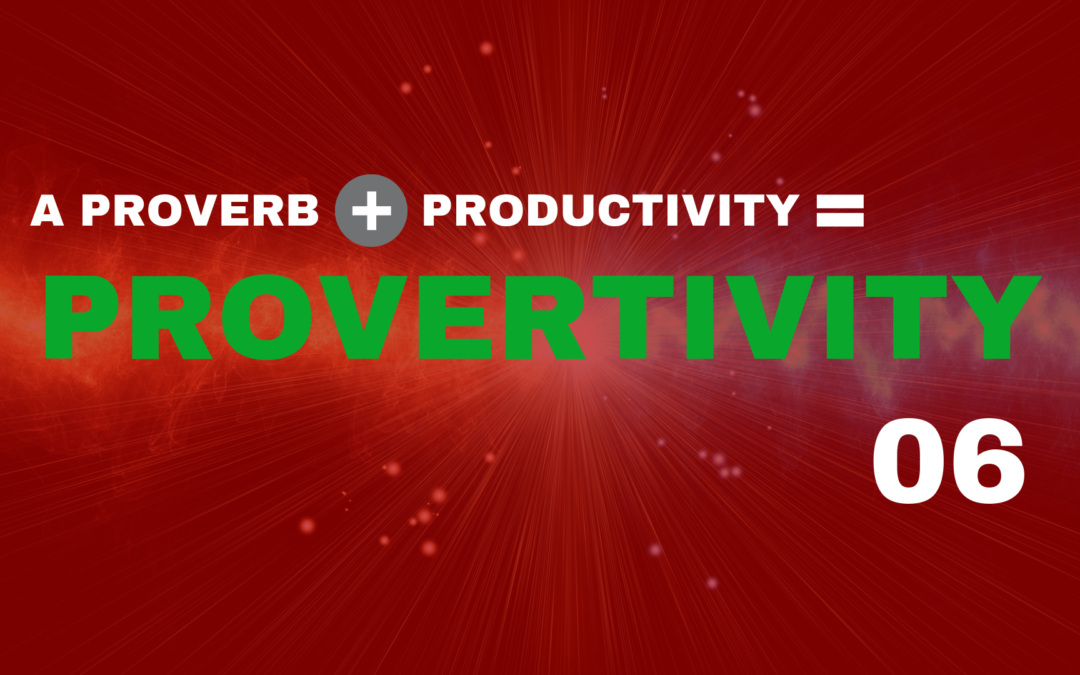Three Steps To Making 2019 Your Most Significant Year of Personal Growth
Can you believe that 2018 is coming to an end and a new year is right around the corner? For this last installment of Provertivity, I thought I would give you a challenge for the new year. Why not make 2019 the year of your most significant personal growth? Maybe that personal growth will come through learning a new skill. Perhaps it will be the result of getting in the best shape of your life. Maybe it will be taking up a new hobby or interest that will stretch you.
Sadly, too many people start a new year with good intentions only to putter out a few weeks later due to lack of progress and or willpower. I know what that is like. For many years I did the same thing. It was only a few years ago, I started going into a new year with more than a resolution, I started the year with a real plan for growth.
Our proverb says,
“Careful planning puts you ahead in the long run; hurry and scurry puts you further behind.”
Proverb 21:5
I want you to consider taking last 7 to 10 days of this year and make a careful plan for how you are going to grow in the new year? Here are three steps you can take to set yourself on the path of success for the new year.
1. Evaluate where you are
What does your life look like? Are you who you want to be physically, financially, relationally and spiritually? When you look at yourself in the mirror (physically or metaphorically), are there things that you want to change? David Horsager, in The Daily Edge, writes, “If you do not know where are today, you cannot know where you would like to be in the future.” Your future success starts with your present assessment of who you are.
What does your life look like? Are you who you want to be physically, financially, relationally and spiritually? When you look at yourself in the mirror (physically or metaphorically), are there things that you want to change? David Horsager, in The Daily Edge. writes, “If you do not know where are today, you cannot know where you would like to be in the future.” Your future success starts with your present assessment of who you are.
2. Envision who you want to be
Visualize what you want your life to look like. What would it look like to be in the best shape of your life? What would financial freedom really mean for you and your family? A fantastic relationship with your spouse; what does that look like? Get a picture, in your mind, of who you want to be. Stephen Covey says to start with the end in mind. That picture in your mind is the end (as far as you can envision it now). So, the more detailed the vision, the better.
[et_bloom_inline optin_id=”optin_3″]
3. Build your plan to become that person
This is where careful planning comes into play. It is time to turn your envisioned tomorrow into specific strategies. I want to share two building blocks for your careful planning.
Building Block #1: Goals!
The first building blocks are goals. Set goals as the targets to determine your success. Goals are the standards of measurement to monitor our performance and assess the need for improvements or adjustments. Study after study has shown that having a way to evaluate one’s performance leads to greater happiest and success. Surprisingly, according to a Harvard study, 83% of the U.S. population does not have specific goals for their lives.
Here are four things to think about when setting your goals. First, set specific goals. Make your goals crystal clear and well defined. “I am going to read more this year.” is not very clear or defined. What are you going to read? What is your measurement for more? Defining your goal more clearly could look like, “I am going to read more this year by reading at least 3 books each month for a total of at least 36 books.”
Secondly, set challenging goals. Michale Hyatt teaches that there are three zones of
As a side, research has found that when people set specific and challenging goals, it leads to higher performance 90 percent of the time.
A third thing to think about when setting your goals is to establish “
The last thing to think about when creating your goals is to write them down. Statistics show that people who write down their goals have over an 80% higher success rate of achieving them. It may surprise you to learn that only about 3% of adults have bothered to put their goals on paper?
“The faintest ink is more powerful than the strongest memory”
Chinese proverb
Building Block #2: Habits
Habits are regularly performed actions that break goals down into manageable steps. Some of your goals are only going to be achieved by the consistent doing of daily, weekly and monthly habits. Aristotle said, “We are what we repeatedly do. Excellence then is not an act, but a habit.”
I like to process my goals through three types of habits. These may be beneficial in your careful planning.
The first kind is linchpin habits. These are also referred to as keystone habits. These habits have the power to set other habits in motion. Like a domino effect linchpin habits produce a number of positive outcomes. A few types of linchpin habits include things like exercise, a daily quiet time, reading, getting enough sleep, saving money.
The second type of habit that I process my goals through is support habits. These habits do what they say they do, they support another habit. A simple example of a support habit would be setting out exercise clothes every night before you go to bed. This encourages the habit of daily exercise. Creating an eating plan for the next day is a support habit for healthy eating habits.
The last type of habit that I process in my plan is to “eat the frog” habits. Mark Twain is quoted for saying, “If it’s your job to eat a frog, it’s best to do it first thing in the morning. And if it’s your job to eat two frogs, it’s best to eat the biggest one first.” We all have responsibilities we have to do on a regular basis, but they are not exciting or things we want to do. So, make them a habit of accomplishing, and do them as early in the day as possible and the biggest one first. Brian Tracy has a great book Eat That Frog: 21 Great Ways to Stop Procrastinating and Get More Done in Less Time that offers excellent insight into this type of habit.
Here is the last thing to remember when it comes to your habits. Your habits are the process, or system of your plan to accomplish your goals. Great athletes get this. For example, Olympic athletes work the process of regular habits. They are less concerned about how far they have to go and more concerned about building the skills that will get them there.
To be successful with your goals, create a schedule where you perform the same habits on a regular basis at the same time every day, week or month. Consistency is the secret to achieving your goals. Track of your progress on a regular basis and try to make small improvements consistently. Regularly review your goals and progress and adjust your habits according to what you have experienced and any changes in your desires.
So, before the clock strikes midnight on December 31, take some time for Careful planning which will put you ahead in the long run. Don’t hurry and scurry into the New Year. It will only set you further behind.
I pray God’s best for you and your family during this season. Have a Merry Christmas and a blessed New Year working on the new you. As always, live intentionally, lead effectively and last by continuing to increase your leadership longevity.


Practical inspiration James. Love this.This is doable! Such a great reminder of the real difference makers for success and how to execute rather than set a grandiose goal that may cause frustration if we are off track after the first quarter. (Which is exactly what happens to many of us…then we adjust our vision/goals,based on our circumstances rather than continuing with steady consistency toward our vision.) I know if we follow this formula we’ll find ourselves moving closer and closer to our desired life. Thank you!